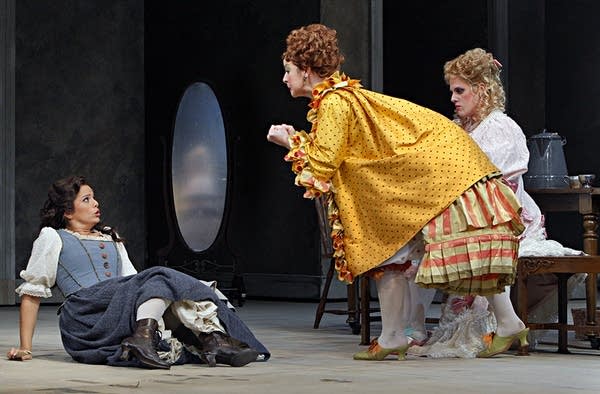
This week, the Metropolitan Opera broadcasts an archive performance of Vincenzo Bellini's Norma, one of the most important works of the bel canto repertoire. (More about that term later.)
Norma was written in 1831, when Bellini was 30. Its story is a variant of the "Romeo and Juliet" theme. This theme of two lovers, separated by culture or conflict, had huge appeal for the 19th century, whether the gap was between Capulets and Montagues (Romeo et Juliette), Egyptians and Ethiopians (Aida), or, as in Norma, ancient Romans and Druids.
Norma is a woman of ancient Gaul, in love with an official of the occupying Roman forces. But she's not simply a love interest. As a Druid priestess, she's a leader of her people. She's the mother of small children, by her Roman lover. When her lover's interest wanes, she's a spurned woman. A many-faceted character, Norma is very much the center of the opera, and a challenging role for a soprano, vocally and dramatically.
In the Met's performance, Norma will be Joan Sutherland, the soprano who played a major role in making so-called "bel canto" operas a regular part of the repertoire.
What is bel canto? The Italian words mean "beautiful singing," but opera lovers seem to agree that the term has a special meaning, beyond the literal meaning of the words.
It's harder to agree just what that meaning is. If you read the article on bel canto in the authoritative Grove Dictionary of Music, you can sense a certain tone of vexation creeping in, as the author employs phrases like "a term loosely used," "clouded by mystique," "jargon of the singing studio," and "to complicate the matter further."
Not to complicate the matter further, Italian operas of the late 18th and early 19th centuries are often labeled "bel canto". They often required singers to sing ornamented music, and do it with elegance. After their heyday, many bel canto works passed out of the regular repertoire. But in the mid-20th century, singers like Sutherland and Maria Callas showed that these works could hold the stage after all. (For example, bel canto is a regular part of Minnesota Opera seasons.)
Here are Joan Sutherland and Marilyn Horne giving an idea of how it sounds, and how it's sung:
Love the music?
Show your support by making a gift to YourClassical.
Each day, we’re here for you with thoughtful streams that set the tone for your day – not to mention the stories and programs that inspire you to new discovery and help you explore the music you love.
YourClassical is available for free, because we are listener-supported public media. Take a moment to make your gift today.












